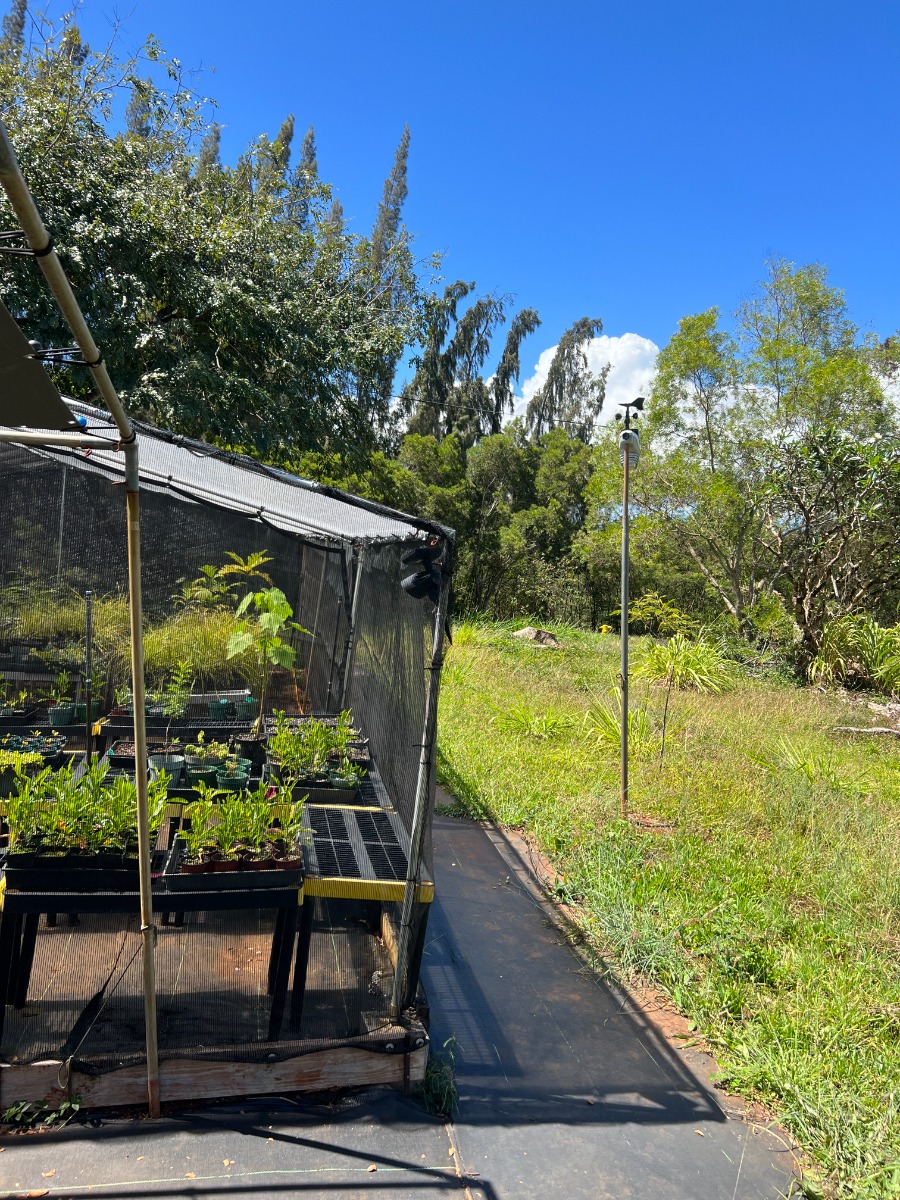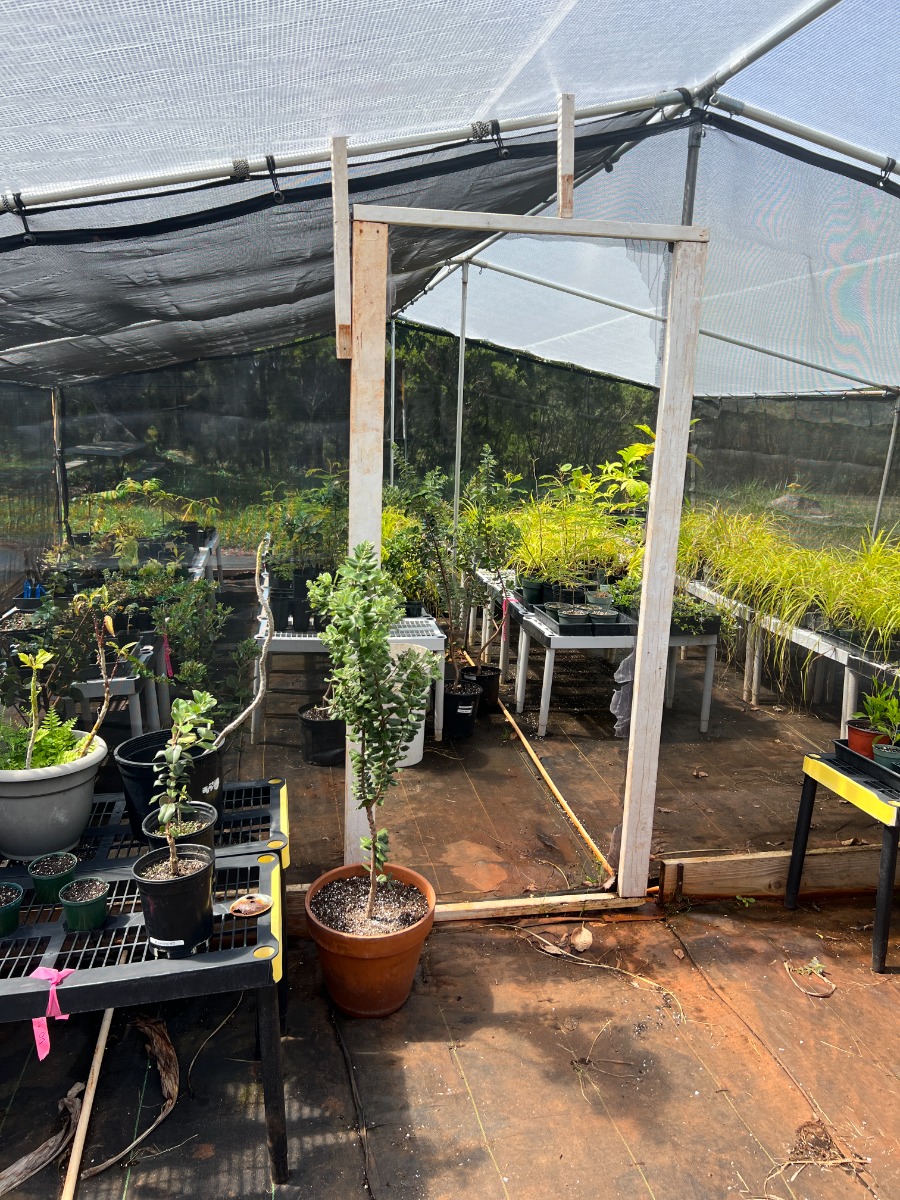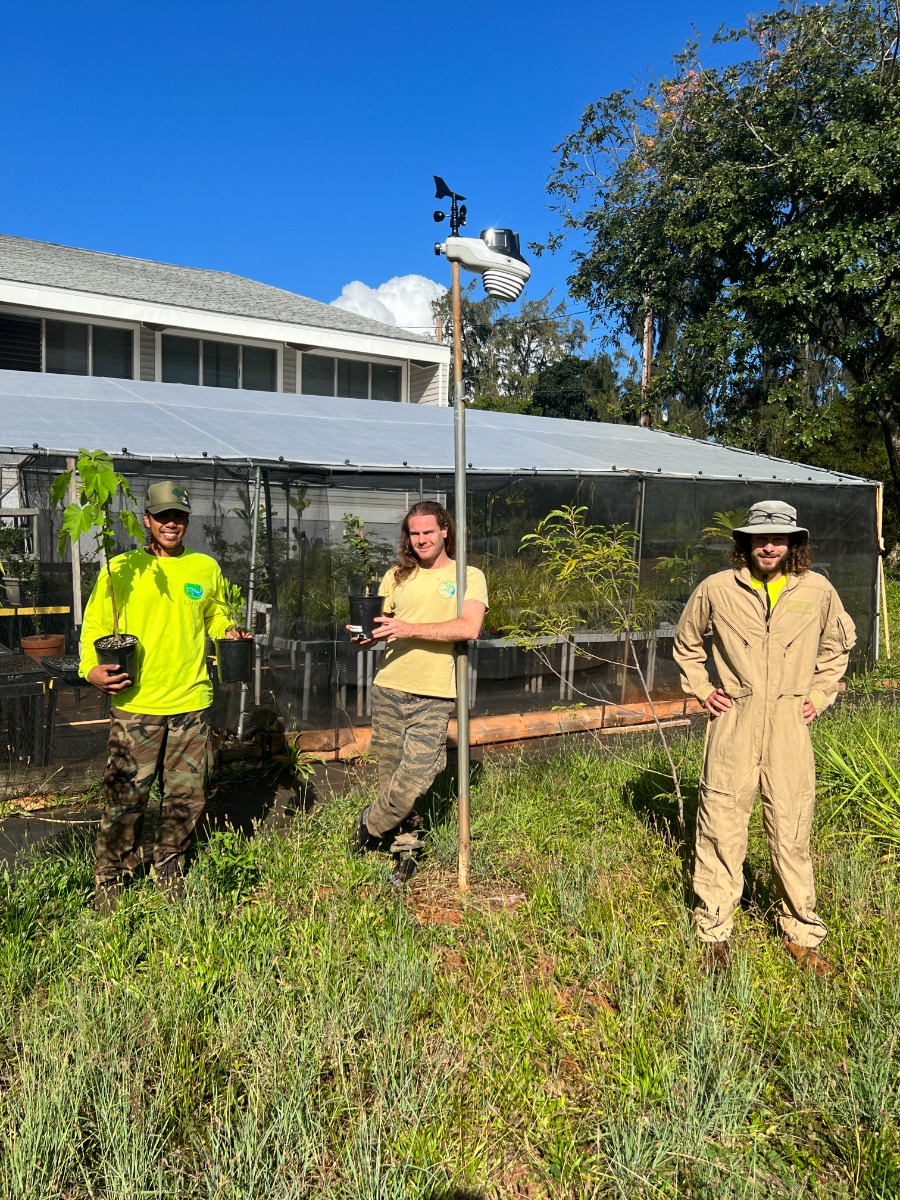Hawai'i Watershed Partnership Utilizes AcuRite to Help Replenish Aquifers
The Ko’olau Mountains Watershed Partnership recently installed an AcuRite Atlas weather station to better grow native plants and provide insight to helicopter pilots — all to help protect native forests in Hawai'i and the fresh water they provide.
“He ali‘i no ka ʻāina, he kauwā wale ke kanaka,” or “the land is chief, man is but a servant,” is a saying that conveys native Hawaiian and conservationists' sentiments regarding protecting and caring for natural resources. Within this saying, the portrayal of ‘āina (land) is important because it is treated as a living entity. The philosophy of aloha ‘āina reminds everyone that we are part of nature and connected to all things, living and not, within the ecosystem. It’s safe to say that the Ko‘olau Mountains Watershed Partnership, on the island of O‘ahu, is no exception to this mindset.
Formed in 1999, the KMWP is a voluntary alliance of public and private landowners dedicated to protecting the native forests of the Ko’olau Mountain Range. The partnership's mission is to perpetuate the water resources of O'ahu by protecting and enhancing the forests of Ko'olau — which provide approximately 90% of the island’s fresh water. Throughout the archipelago, all municipal water is derived from groundwater. It often starts as mist or fog which collects on the leaves of specialized native plants that dwell on windswept mountain summits. This water, along with rainfall, is then effectively channeled into the ground by the native vegetation where it percolates into dike confined water or the aquifer.
“We focus so much on natural resources because the native species are the best at getting water into the soil,” said Melani Spielman, Outreach Coordinator at the KMWP. “Then, from the soil, the water flows into our aquifers, which is essentially our main goal — to make sure as much high-quality water as possible is getting into the aquifers on our island.”
Enhancing Plant Growth Monitoring for Stronger Outplanting
With a focus on native species, the KMWP utilizes a small greenhouse to propagate and nurture a variety of "workhorse" native plants commonly found out on the range. Once those plants are mature enough to be planted into the ground, they're taken by staff members — there are 14 at the KMWP — or community volunteers to their forest restoration sites and planted to help those ecosystems retain rainwater, provide habitat for other native species, and, in some cases, grow a green/shaded fuel brake which functions to slow a wildfire’s progress.
“We’re really trying to up our outplanting and restoration game,” said Jesse Adams, Planner at the KMWP. “So now’s the perfect time to start using a weather station to help us with growing conditions alongside the greenhouse.”
Right outside the open-air greenhouse at the base of the range now sits an AcuRite Atlas® weather station. Staff utilize the weather station to receive real-time weather conditions to assist in managing their greenhouse stock. If the temperature reading on the AcuRite Atlas display inside the office is too warm, they know to water the plants. If the UV index is high, they can move their shade-loving plants out of the intense sun. Rainfall is another closely watched metric at the KMWP.


“It’s important to know what’s going on over by the greenhouse so we don’t over or underwater the plants,” Spielman said. “We can take a look at the display and say, ‘hey, the plants got a ton of sun today but not a drop of water.’ Or if we notice strong winds on the display, we can go outside and check that nothing is blown over. The weather station helps us to know what the plants are going to need.”
Growing within the greenhouse are native species such as the ōhiʻa lehua — Metrosideros polymorpha, the state tree of Hawaii, which is a flowering evergreen. It is a keystone species, meaning it plays a fundamental role in the native ecosystem at a defined level. Also growing is carex wahuensis, a ground-covering sedge, and acacia koa (koa trees), the largest native Hawaiian tree and a vital component of Hawaii’s forests. The KMWP also grows invasive species within its greenhouse. Not to plant, of course, but to educate the community and visitors.
“We keep a mule’s foot fern, which is really bad for our ecosystem,” Adams said. “They form what’s called a monotypic stand, which only allows one type of fern to grow and stops other plants from growing underneath them. We like to show the public, so when they’re out hiking, they can recognize them, take a photo, send it to us, and then we’ll crowdsource to figure out where they are and remove them.”


Providing Wind Insight for Helicopter Pilots
In addition to helping native plants grow for outplanting purposes, the KWMP uses the weather station to monitor wind direction, wind speed, and wind gusts for aerial operation planning purposes. Staff observe these measurements and relay them to the partnership’s helicopter pilots to determine if it’s safe to fly up the range and land at their landing zone, where most of their work occurs.
“Wind speed and direction are important for our helicopters,” Adams said. “If gusts are above 20 miles an hour, our pilots can’t fly. At the landing zone up the hill from us, there isn’t a windsock, so our pilots must know the wind direction that we get from the weather station.”




Possible Future Weather Station Installations and Continued Community Involvement
In the future, staff at the KMWP may install additional AcuRite weather stations higher up the mountainside to capture higher-elevation weather data. For now, they are happy utilizing the near-base weather station for weather monitoring help related to propagation and operation planning. Plus, a weather station near the base is a lot easier to service than one that requires a helicopter ride.
“If something on the weather station needed adjusting, we can just go outside here by the base and take it off the pole,” Adams said. “Most of the areas we work in require a helicopter flight, so if something goes awry, it could be a week, two weeks, or a month before we get out to service that weather station.”
The on-base weather station is helping plants thrive in the KMWP greenhouse. The condition measurements provided by the AcuRite Atlas display help staff determine if the plants need more or less sun and water for optimal and sustained growth. Once healthy enough, these plants will be transported to their forever homes on the Ko'olau Mountain Range and planted to help strengthen the unique ecosystem and fill O’ahu’s aquifers.
“We recently had an outplanting workday with a 50-year-reunion graduating class from a local high school,” Spielman said. “Tomorrow, I’ll be talking to an afterschool program for young kids. Everyone can play a part in conservation.”






